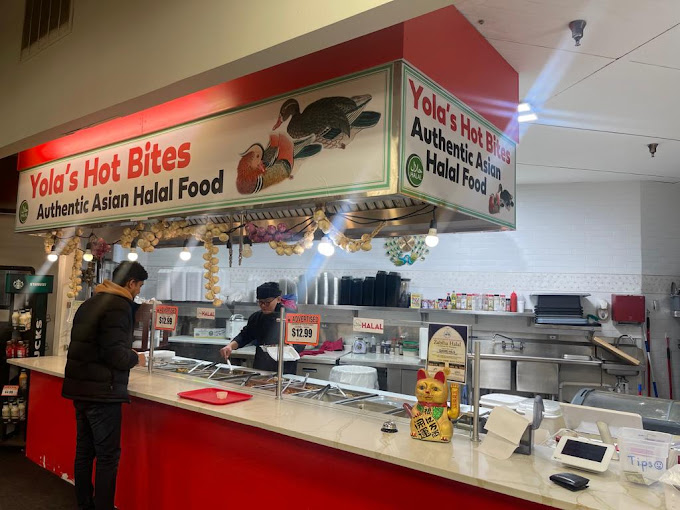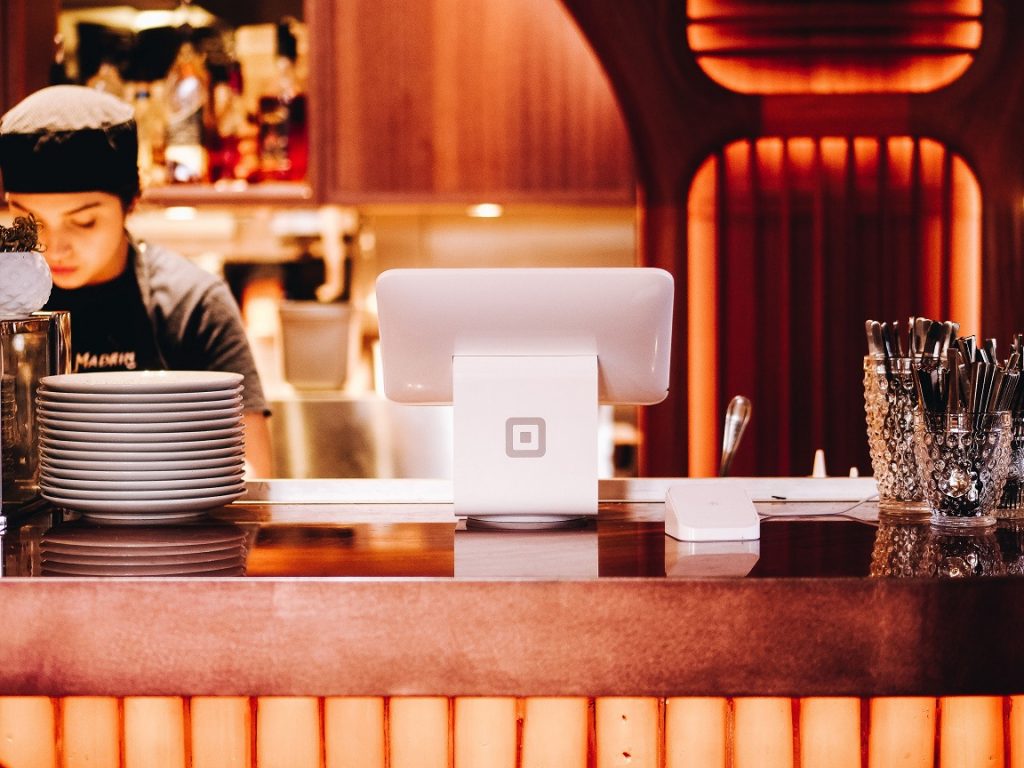Savor Genuine Eastern Cuisine With a Pan-Asian Spin for a Culinary Journey
Embarking on a culinary journey through genuine Eastern food, boosted with a Pan-Asian spin, supplies an one-of-a-kind possibility to discover the abundant tapestry of tastes that define the region's diverse cooking practices. As you contemplate these luring recipes, think about the social narratives and historic influences that shape them, each bite providing a story waiting to be discovered. pan asian dining Islamabad.

Exploring Pan-Asian Flavors
In the realm of global gastronomy, Pan-Asian cuisine sticks out for its impressive diversity and the harmonious interplay of tastes from different Eastern societies. This cooking method commemorates the one-of-a-kind ingredients and abundant traditions discovered throughout the continent, producing a tapestry of tastes that is both satisfying and intriguing. Secret to Pan-Asian cuisine is its ability to balance different flavors-- sweet, salted, spicy, and sour-- while highlighting the freshness and quality of each active ingredient.
From the umami-rich soy sauce of Japan to the fiery chili peppers of Thailand, Pan-Asian food provides a comprehensive palette of flavors. These aspects are commonly incorporated in creative methods, improving meals with layers of intricacy. For circumstances, the usage of aromatic natural herbs such as lemongrass and cilantro, usual in Vietnamese and Thai food, adds a refreshing brightness to recipes, while the consolidation of coconut milk delivers a creamy, rich texture.
The focus on fresh produce and fragrant spices guarantees that each meal is not only a feast for the preference buds but also for the senses. Pan-Asian cuisine invites diners to get started on a cooking trip, exploring the huge and varied landscapes of Asian gastronomy with every bite.
Blend Recipes to Attempt
While Pan-Asian food is commemorated for its conventional flavors, the contemporary cooking landscape is significantly accepting combination recipes that mix these classic components with impacts from various other areas. This innovative method not only honors the abundant heritage of Asian cookeries however likewise presents unique taste experiences that appeal to contemporary tastes.
A prime example of such a fusion meal is the Korean-Mexican taco, where seasoned bulgogi beef is covered in a warm tortilla, topped with kimchi and a hot gochujang-infused salsa. This mix weds the strong, savory tastes of Korea with the vivid, fresh components of Mexican food. Similarly, sushi burritos have gained appeal, joining together the delicate creativity of Japanese sushi with the passionate, hand-held benefit of a burrito, commonly including fusion active ingredients like tempura shrimp and avocado with a drizzle of wasabi mayo.
Another significant meal is Thai curry ramen, which infuses the velvety, fragrant spices of Thai curry right into the calming broth of traditional Japanese ramen, producing a harmonious blend that tantalizes the detects. These fusion dishes expand past plain novelty; they represent a cooking discussion between societies, encouraging expedition and advancement on the planet of Pan-Asian food.
Essential Components and Spices
To absolutely appreciate Pan-Asian cuisine, one must recognize the important components and flavors that form its structure. This varied cooking style draws from an abundant tapestry of Oriental traditions, utilizing a harmonious blend of appearances and tastes.
Aromatic components are crucial, with garlic, ginger, and lemongrass being common across numerous Pan-Asian recipes. These components supply an aromatic base rosati's that enhances the complexity of flavors. Spices such as star anise, cardamom, and cinnamon introduce heat and character, echoing influences from regions like China and India.

Cooking Methods and Tips
Mastering the art of Pan-Asian cuisine needs knowledge with its unique food preparation strategies, each adding to the lively tapestry of flavors this cooking practice is commemorated for. Central to these methods is the stir-fry, a quick food preparation technique that preserves the dietary stability and dazzling colors of ingredients. Using a frying pan, the stir-fry technique permits also warmth distribution, essential for attaining the characteristic structure and flavor balance of Pan-Asian recipes.
One more basic technique is steaming, specifically prevalent in Chinese cuisine. This gentle method preserves the all-natural tastes and nutrients of ingredients, making it perfect for fish and shellfish and vegetables. Dumplings, a beloved staple, usually benefit from steaming, resulting in soft, succulent textures.
Cooking, additionally essential, gives smoky midsts to recipes such as Korean bulgogi or Japanese yakitori (Fine dining experience Islamabad). This method frequently entails marinating components, allowing tastes to penetrate deeply before food preparation over an open flame or warmer
Last but not least, mastering the art of stabilizing tastes-- sweet, sour, salty, bitter, and umami-- is essential. Properly layering these elements can raise a dish from common to remarkable, providing a complicated and click for info pleasing cooking experience that embodies the essence of Pan-Asian cuisine.
Dining Experiences Worldwide
Throughout the globe, Pan-Asian cuisine provides an unequaled dining experience, commemorated for its rich tapestry of tastes and vivid discussions. This cooking phenomenon has actually transcended cultural limits, catching the hearts and tastes buds of food lovers worldwide. In cosmopolitan cities fresh York, London, and Sydney, Pan-Asian dining establishments act as fusions where cooking customs from Thailand, Japan, China, and beyond assemble, giving diners with an eclectic mix of meals that highlight the region's variety.
The worldwide charm of Pan-Asian food exists in its capability to use both authenticity and technology. Cooks skillfully wed standard components such as lemongrass, soy sauce, and miso with contemporary techniques, resulting in recipes that are both acquainted and refreshingly new. This combination allows restaurants to start a cooking journey that values heritage while accepting modernity.
Additionally, eating experiences are boosted with thoughtfully designed atmospheres that reflect the ethos of Pan-Asian aesthetic appeals. From minimal Japanese-inspired insides to vivid Thai-themed rooms, each restaurant offers a distinct setting that complements the cooking my blog offerings. As an outcome, clients are not just taking in a dish yet partaking in a social experience, making Pan-Asian dining a genuinely international sensation.
Verdict
The exploration of Pan-Asian food uses a profound understanding of the intricate interplay of flavors and cooking traditions across Asia. By welcoming blend meals such as Thai curry ramen and sushi burritos, the cooking journey not just highlights the flexibility of conventional ingredients yet likewise showcases innovative contemporary techniques. This gastronomic journey, improved by important seasonings and cooking approaches, supplies a special possibility to appreciate the multiculturalism and culinary creativity that define Pan-Asian food on a global range.
Beginning on a culinary journey via genuine Eastern cuisine, boosted with a Pan-Asian twist, offers a special opportunity to discover the rich tapestry of tastes that define the area's diverse cooking traditions.In the realm of global gastronomy, Pan-Asian food stands out for its exceptional diversity and the unified interplay of tastes from various Asian cultures. Secret to Pan-Asian food is its ability to balance different flavors-- sweet, salted, spicy, and sour-- while highlighting the freshness and top quality of each active ingredient.
